|
|

|
Porsche, and the Porsche crest are registered trademarks of Dr. Ing. h.c. F. Porsche AG.
This site is not affiliated with Porsche in any way. Its only purpose is to provide an online forum for car enthusiasts. All other trademarks are property of their respective owners. |
|
|
  |
| technicalninja |
 Jun 2 2024, 07:06 AM Jun 2 2024, 07:06 AM
Post
#21
|
|
Senior Member    Group: Members Posts: 1,948 Joined: 31-January 23 From: Granbury Texas Member No.: 27,135 Region Association: Southwest Region 
|
@wonkipop
Thank you for all of your knowledge! The early history of German fuel injection is very interesting. Even more so that Bosch bought Bendix patents. I thought Bosch was OG on all of their stuff. World-wide to me means more than Europe. Seeing D-Jet across Europe doesn't surprise me at all. I "lump" Australia in with Europe due to the "English" component. This is probably unfair as the USA had that same component (till we chucked them out!). I see L-Jet as the ancestor of all modern port injection. What would be VERY interesting is the "number of units made" of each style. I'm not sure of the "death date" of L-jet. I see Motronic as a modern digital version of L-jet. I am probably wrong. I, also, cannot pinpoint an American car that used the first version of L-Jet so even L-jet is not "World Wide" using my designators (actually manufactured on all continents). By the time L-Jet added computer control of the ignition, MAP and MAF sensors, potentiometer on the throttle, and O2 sensors it went mainstream on American stuff as well. I don't know if it was still considered L-Jet at that time. I cannot remember a single American car with an AFM... Maybe there is one! Now, impress me! I'd love to know all about the earlier stuff... I'm speaking of the mechanical injection on the 300SL Gullwings/roadsters Was that the same (I believe Bendix) as the early FI in American stuff (57 FI Corvette)? I don't think it is. I think the early Mercedes stuff is more like diesel injection (or Spica) but have never heard a good explanation. The above might be better in another thread. Sorry if I've ruffled feathers... Didn't mean to. What was the first FI actually made in Australia? The first American stuff has the word "Bosch" imprinted on most of the components... |
| JeffBowlsby |
 Jun 2 2024, 07:58 AM Jun 2 2024, 07:58 AM
Post
#22
|
|
914 Wiring Harnesses      Group: Members Posts: 8,703 Joined: 7-January 03 From: San Ramon CA Member No.: 104 Region Association: None 
|
No ruffled feathers here...we are here in part to learn from each other.
From the great Wikipedia: "The Electrojector was first offered by American Motors Corporation (AMC) in 1957.[3][4] The Rambler Rebel was used to promote AMC's new 327 cu in (5 L) engine.[5] The Electrojector-injected engine was an option and rated at 288 bhp (215 kW).[6] It produced peak torque 500 rpm lower than the equivalent carburetor engine[7] The cost of the EFI option was US$395 and it was available on 15 June 1957.[8] According to AMC, the price would be significantly less than Chevrolet's mechanical fuel injection option.[9] Initial problems with the Electrojector meant only pre-production cars had it installed so very few cars were sold[10] and none were made available to the public.[11] The EFI system in the Rambler worked well in warm weather, but was difficult to start in cooler temperatures.[8] Chrysler offered Electrojector on the 1958 Chrysler 300D, DeSoto Adventurer, Dodge D-500, and Plymouth Fury.[9] The early electronic components were not reliable in an underhood environment and were not easily modified as engine control requirements advanced. Most of the 35 vehicles originally equipped with Electrojector were retrofitted with 4-barrel carburetors. The Electrojector patents were subsequently sold to Bosch. Bosch developed their D-Jetronic (D for Druckfühlergesteuert, German for "pressure-sensor-controlled"), from the Electrojector, which was first used on the VW 1600TL/E in 1967. This was a speed/density system, using engine speed and intake manifold air density to calculate "air mass" flow rate and thus fuel requirements. This system was adopted by VW, Mercedes-Benz, Porsche, Citroën, Saab, and Volvo. Lucas licensed the system for production in Jaguar cars, initially in D-Jetronic form, before switching to L-Jetronic in 1978 on the XK6 engine." |
| technicalninja |
 Jun 2 2024, 08:14 AM Jun 2 2024, 08:14 AM
Post
#23
|
|
Senior Member    Group: Members Posts: 1,948 Joined: 31-January 23 From: Granbury Texas Member No.: 27,135 Region Association: Southwest Region 
|
Druckfühlergesteuert...
Now, there's a mouthful! I've got one of your L-Jet harnesses that I bought from another member with a "complete L-jet system". Your harness is the MAIN reason I purchased it. Truely WORLD CLASS. You KICK ASS on harnesses, Sir! You could probably sell the same basic critter to the Z car world as well... |
| JeffBowlsby |
 Jun 2 2024, 08:21 AM Jun 2 2024, 08:21 AM
Post
#24
|
|
914 Wiring Harnesses      Group: Members Posts: 8,703 Joined: 7-January 03 From: San Ramon CA Member No.: 104 Region Association: None 
|
Thanks!
Then there was also Rochester Ramjet for certain American muscle but it was a mechanical-based injection that died on the vine: "The Rochester Ramjet is an automotive fuel injection system developed by the Rochester Products Division of General Motors and first offered as a high-performance option on the Corvette and GM passenger cars in 1957. It was discontinued partway through 1965 in favor of the Chevrolet Big Block as a performance option.[1][2] Unlike electronic fuel injection systems that would become common decades later, the Ramjet is purely mechanical and relies on vacuum and pressure signals to measure airflow and meter fuel.[3]" |
| technicalninja |
 Jun 2 2024, 08:32 AM Jun 2 2024, 08:32 AM
Post
#25
|
|
Senior Member    Group: Members Posts: 1,948 Joined: 31-January 23 From: Granbury Texas Member No.: 27,135 Region Association: Southwest Region 
|
And here's the REALLY sad part...
Just before I was born my dad was SCCA racing a 1957 Corvette "Sebring Special". This was the car you ordered from Chevrolet to go racing... It had ALL of the performance RPO and NONE of the luxury RPO. FI, super T10, LSD, sinter-metallic brakes, soft top, ram air intake. Radio delete plate, no chrome, even the "cove" was body color. The baddest of the bad... Hard to say what that car would be worth today. I'd guess 7 figures He sold that and replaced it with a Convertible D (which he aslo raced W-W) right about the time I was born. The D was special as well... |
| wonkipop |
 Jun 2 2024, 04:34 PM Jun 2 2024, 04:34 PM
Post
#26
|
|
Advanced Member     Group: Members Posts: 4,658 Joined: 6-May 20 From: north antarctica Member No.: 24,231 Region Association: NineFourteenerVille 
|
@technicalninja
mr. b (Jeff Bowlsby) knows everything there is to know about D jet. i've never owned a D jet i only know the history in a typically skim the surface way. though digging out precise times and dates from obscure documents is something i have enjoyed regarding L jet. i've got an emotional stake in L jet and even 30 odd years ago when i got the car i knew it was significant for being the first car with the system. (or so i thought until 3 or 4 years ago when i discovered it was actually the VW 412 - but if we say its the 1.8 air cooled engine in both cars then its true it was the first). yes - basically D jet is an american home grown invention you might say. D jet owes a tremendous amount to the schematic layout and elements of the Electrojet system. I believe somewhere in the USA a person owns the only surviving intact specimen of this system. it was fitted to a certain low production chrysler model. as to mercedes benz and their mechanical fuel injection systems. as for instance applied to the gullwings, or stirling moss's famous racer. straight from WW2. virtually the same system that went in the BF 109 fighter plane. why....germany relied on artificial synthetic fuels made from coal processing. very low octane. the engines needed mechanical fuel injection and superchargers to match the performance of british spitfires etc. the engines were also inverted in 109s so they could run the destructive 20mm cannon straight through the centre of the crankshaft. i think fuel injection was almost necessary to run the engine upside down so to speak. if you were in a 109 and you wanted to escape a spitfire you put it into a negative g at the top of the curve dive. the spitfire would stall trying to chase the 109. until there was some kind of mrs shillings orifice or something like that to fix the problem of the carbies on the english engines. but i digress. none of that stuff is electronic fuel injection. purely mechanical. porsche were the same about injection. everything had to be for racing. at least during f. piechs time there during the 60s. so it was mechanical mechanical mechanical, even in the road cars. i guess the point about L jet and its been made a million times is it was simple simple simple and cheap cheap cheap(er) than anything that had come before it. still more expensive than a carby or two but.........if you are making a mass market car in huge numbers with a tiny engine that is going to be massively crippled by emissions laws you know its the only way you can go. VW had its backs to the wall when it came to the USA market after the Nixon Clean Air Act of 1970. when bosch engineers rocked up with a fastback clandestinely fitted with a prototype system in the mid sixties, VW did not even hesitate. straight into it. lets go sort of thing. its a well known and often told story. about the merc sedan and the VW type 3 that were driven straight to the VW and Merc engineering departments with the keys tossed to them for a drive. birth of D jet. |
| wonkipop |
 Jun 2 2024, 04:46 PM Jun 2 2024, 04:46 PM
Post
#27
|
|
Advanced Member     Group: Members Posts: 4,658 Joined: 6-May 20 From: north antarctica Member No.: 24,231 Region Association: NineFourteenerVille 
|
i might add @technicalninja
there is very little written about the history of Ljet and its development. even by bosch themselves. its possible texts exist in german and are held in technical universities in germany. but i have not found anything in searches. i don't even know who the main mind behind it was. but its a classic bit of avant garde modernist thinking. its called inversion. you rigorously observe the opposite principle. you force yourself to think the opposite way from the way it is. thats basically what they did. thought of it as the opposite of D jet. thats a very smart way to go about things. regarding australia and lumping it in with the rest of the world. very american attitude. no offense taken. (IMG:style_emoticons/default/biggrin.gif) (IMG:style_emoticons/default/biggrin.gif) (IMG:style_emoticons/default/biggrin.gif) (IMG:style_emoticons/default/biggrin.gif) post WW2 australia is riven politically and economically by two tensions. the establishment tied to the british upper ruling class and the aftermath of its origins as a colony and their interests in the "mother" country. and a new emergent group allied to the United States and its vision for the pacific post WW2. despite the awfulness of WW2 and the aftermath of the Japanese being the enemy Australia was one of the first countries to really open itself culturally and economically wit Japan. we supplied them with iron ore etc etc. we got all their cars before you guys. we were the guinea pigs for the japanese export car market. it all came here and got tried out before it was sent in big numbers to you guys. i believe some of the earliest datsun 240Zs ever made came to australia before they even hit the domestic J market. it helps to be right hand drive when it comes to japanese product. secondly a massive immigrant population post WW2 of greeks, italians, germans. lithuanians, russian jews. you name it fostered the import industry of european cars. alfas, fiats, lancias, VWs, Porsche, Mercs, Citroens, Panhards, on and on. the only carmakers to suffer defeat were you guessed it. the mother countries rolling junk piles. morris, austin, shaguars, etc. |
| wonkipop |
 Jun 2 2024, 05:00 PM Jun 2 2024, 05:00 PM
Post
#28
|
|
Advanced Member     Group: Members Posts: 4,658 Joined: 6-May 20 From: north antarctica Member No.: 24,231 Region Association: NineFourteenerVille 
|
@technicalninja - re first fuel injection made in australia?
well the australian auto industry (home grown sort of but not) was as the industrial outposts of FORD, GM and CHRYSLER. Leyland was a player in the 60s and early 70s. a better word though would be loser. FORD tended after the 60s to allign itself with Ford Europe. GM similarly so. Chrysler did not. and local Chrysler folded first. all the gear on the Fords and Holdens is bosch. it starts being fitted in the 80s and 90s. bosch had a local operation too, but not sure to what extent exotic components such as ECUs etc were made here. doubt they were. but don't really know. all irrelevant now. the industry folded in the early 21st century. a tragedy i might add in my view. |
| technicalninja |
 Jun 2 2024, 05:13 PM Jun 2 2024, 05:13 PM
Post
#29
|
|
Senior Member    Group: Members Posts: 1,948 Joined: 31-January 23 From: Granbury Texas Member No.: 27,135 Region Association: Southwest Region 
|
Two ways to measure load on an engine.
Manifold vacuum- D-jet, also MAP sensor. Can calculate load Weight of air- maybe more accurate in operation than MAP, L-jet K-jet also MAF sensor. This actually measures the amount of air being consumed. All modern stuff I work on has BOTH now... It's helps to get all of the available data. This is a NICE quick read regarding Bosch Jetronic overall. I have learned the "death date" of L-jet and it happened exactly as I described... I also learned that "Mono-Jetronic" exists. Chevrolet TBI! Ford CFI! Millions of them... Only uses a TPS to determine load but totally dependent on O2 control. Super simple. https://en.wikipedia.org/wiki/Jetronic |
| wonkipop |
 Jun 2 2024, 05:43 PM Jun 2 2024, 05:43 PM
Post
#30
|
|
Advanced Member     Group: Members Posts: 4,658 Joined: 6-May 20 From: north antarctica Member No.: 24,231 Region Association: NineFourteenerVille 
|
Two ways to measure load on an engine. Manifold vacuum- D-jet, also MAP sensor. Can calculate load Weight of air- maybe more accurate in operation than MAP, L-jet K-jet also MAF sensor. This actually measures the amount of air being consumed. All modern stuff I work on has BOTH now... It's helps to get all of the available data. This is a NICE quick read regarding Bosch Jetronic overall. I have learned the "death date" of L-jet and it happened exactly as I described... I also learned that "Mono-Jetronic" exists. Chevrolet TBI! Ford CFI! Millions of them... Only uses a TPS to determine load but totally dependent on O2 control. Super simple. https://en.wikipedia.org/wiki/Jetronic yes @technicalninja the old 02 sensor. the next big thing. and a massive investment by bosch. bigger in someways than the whole development behind the earlier efi systems of D jet and L jet. bosch controlled the patents on that after they finally succeeded. its made them a fortune. the lack of a suitable 02 sensor stalled the timeline of the Nixon Clean Air Act. they were meant to get to a point in 1975 that they did not achieve until the early 80s. the carmakers and (even bosch) simply could not deliver the technology to make the standards in the time span. The USEPA worked with the carmakers to amend the plan realistically. the 02 sensor was the critical bit needed. the difference between CARB and USEPA was an agreement reached between the USEPA and carmakers as well to assist with the introduction of technology. more of less split the domestic car market in half and meant in any one year USA and foreign car companies only had to address 50% of the volume of sales to the new standards. the remaining 50% would use the californian stuff the year after in the other 49 states. L jet evolves. quickly becomes L jet with added suffixes as the 02 sensor kicks in. not sure when the last airflow meter is done. but i know that 964s had AFMs in the very late 80s. and some domestic sales australian stuff still had them in the 90s on new cars. in the absence of an 02 sensor L jet is assuming load but its got no feedback. it was able to do a better (more accurate) job guessing (or assuming) what that was than D jet could. but it still could not make the standards that were aimed for in 1970 for 1975. no one could. |
| wonkipop |
 Jun 2 2024, 05:58 PM Jun 2 2024, 05:58 PM
Post
#31
|
|
Advanced Member     Group: Members Posts: 4,658 Joined: 6-May 20 From: north antarctica Member No.: 24,231 Region Association: NineFourteenerVille 
|
ps @technicalninja
one of the cars that did have L jet here early on that i remember was the fiat x/19. that was from the early 80s. and i think all the third generation VW buses had it. they were called VW caravelles here. the later ones had the water cooled boxer engines with L jet from memory. there is no real enforcement of emissions standards in australia. we don't have to smog the cars. its more an informal thing where service shops are meant to ensure the car is tuned to the factory specifications each time it is taken in for regular maintenance. the manufactureres are required to guarantee a warranty on emissions for a statutory period. i think its 5 years. it is however illegal to tamper with the emissions equipment on cars and there have been cases where workshops have been fined if it can be proved they have removed or altered emissions equipment. if anything was ever enforced in relation to historic cars my 914 would be so far in front of the aus standards in 1974 it would walk through it. assuming of course engine internals in good condition. but nothing is enforced in that regard. apart from your car cannot blow oil smoke. the cops will pull you over for that and give you a canary. (yellow unroadworthy sticker). once its got a canary you cannot drive it on the road. |
| L-Jet914 |
 Jun 2 2024, 07:17 PM Jun 2 2024, 07:17 PM
Post
#32
|
|
Member   Group: Members Posts: 277 Joined: 24-October 12 From: Davis, CA Member No.: 15,080 Region Association: Northern California |
Two ways to measure load on an engine. Manifold vacuum- D-jet, also MAP sensor. Can calculate load Weight of air- maybe more accurate in operation than MAP, L-jet K-jet also MAF sensor. This actually measures the amount of air being consumed. All modern stuff I work on has BOTH now... It's helps to get all of the available data. This is a NICE quick read regarding Bosch Jetronic overall. I have learned the "death date" of L-jet and it happened exactly as I described... I also learned that "Mono-Jetronic" exists. Chevrolet TBI! Ford CFI! Millions of them... Only uses a TPS to determine load but totally dependent on O2 control. Super simple. https://en.wikipedia.org/wiki/Jetronic yes @technicalninja the old 02 sensor. the next big thing. and a massive investment by bosch. bigger in someways than the whole development behind the earlier efi systems of D jet and L jet. bosch controlled the patents on that after they finally succeeded. its made them a fortune. the lack of a suitable 02 sensor stalled the timeline of the Nixon Clean Air Act. they were meant to get to a point in 1975 that they did not achieve until the early 80s. the carmakers and (even bosch) simply could not deliver the technology to make the standards in the time span. The USEPA worked with the carmakers to amend the plan realistically. the 02 sensor was the critical bit needed. the difference between CARB and USEPA was an agreement reached between the USEPA and carmakers as well to assist with the introduction of technology. more of less split the domestic car market in half and meant in any one year USA and foreign car companies only had to address 50% of the volume of sales to the new standards. the remaining 50% would use the californian stuff the year after in the other 49 states. L jet evolves. quickly becomes L jet with added suffixes as the 02 sensor kicks in. not sure when the last airflow meter is done. but i know that 964s had AFMs in the very late 80s. and some domestic sales australian stuff still had them in the 90s on new cars. in the absence of an 02 sensor L jet is assuming load but its got no feedback. it was able to do a better (more accurate) job guessing (or assuming) what that was than D jet could. but it still could not make the standards that were aimed for in 1970 for 1975. no one could. side track I know Toyota adopted the L-Jet system and improved on the system with their Denso versions and O2 sensors. My 1990 Toyota Corolla LE 5 speed with the 4A-FE engine had a vane air flow meter just like our 1.8L 914s. Toyota used that system up until 1992 on the corollas, 1994 on the Toyota pickup (US) 3VZ and 22R-E, Celica Supra with the 5M-GE, Toyota Supra with the 7M-GE and I can't remember what other models utilized that system. |
| wonkipop |
 Jun 3 2024, 12:47 AM Jun 3 2024, 12:47 AM
Post
#33
|
|
Advanced Member     Group: Members Posts: 4,658 Joined: 6-May 20 From: north antarctica Member No.: 24,231 Region Association: NineFourteenerVille 
|
@L-Jet914
yeah - in a similar vane (no pun intended) our workshop 1994 ford falcon ute (aussie ford) that i restored during lockdowns has a straight six with LE-Jetronic fuel injection. pretty sure its a vane type AFM on it as well. have to check but i seem to recall its there. fairly contorted plumbing on the fords of that era as they converted and adapted a very old design from the 70s first to cross flow and then to LE fuel injection. the model before it still had a carby with emission strangling. the commercials were the last to get the EFI system. |
| wonkipop |
 Jun 3 2024, 04:31 AM Jun 3 2024, 04:31 AM
Post
#34
|
|
Advanced Member     Group: Members Posts: 4,658 Joined: 6-May 20 From: north antarctica Member No.: 24,231 Region Association: NineFourteenerVille 
|
@technicalninja
and anyone else vaguely interested. the original SAE paper written by the development engineers at Bendix behind the system. paper dates from the late 1950s. for those of you with D jet you will recognise all the components. including the operation of the lower half of the ignition distributor. some of you probably already have this paper. i would imagine mr b. ( @JeffBowlsby )has it stashed away in his files. i found it in an obscure section of junk i had filed away on origins of L jet. (IMG:style_emoticons/default/biggrin.gif) (IMG:style_emoticons/default/beerchug.gif) 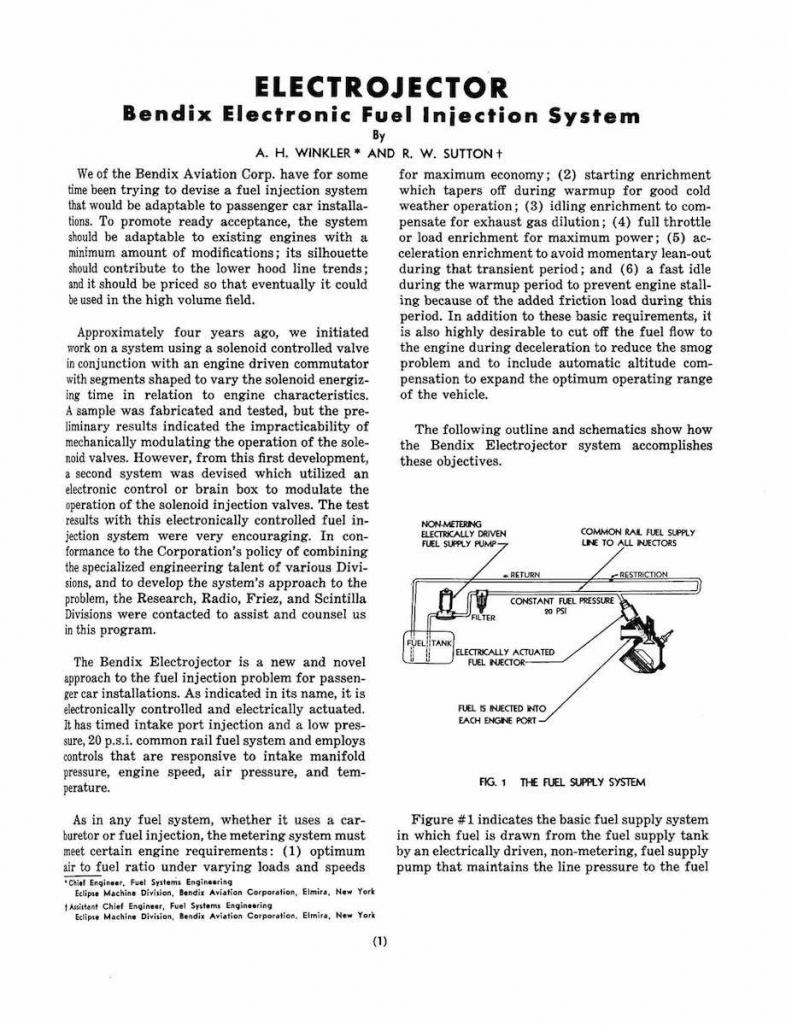 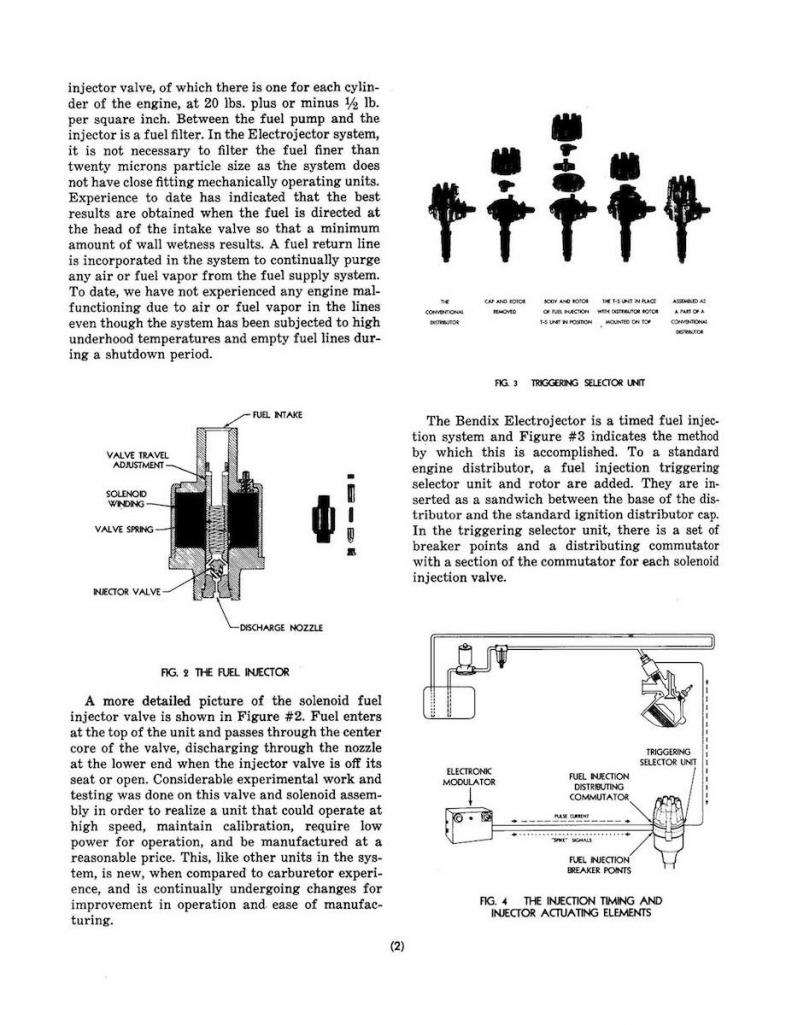 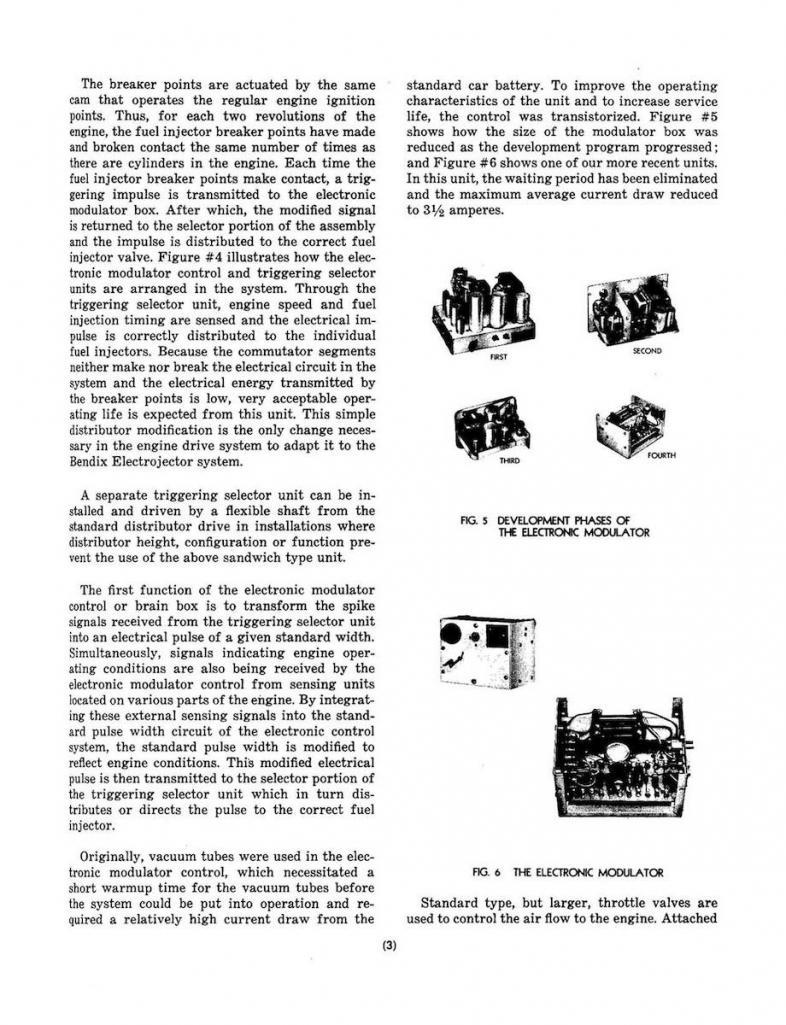 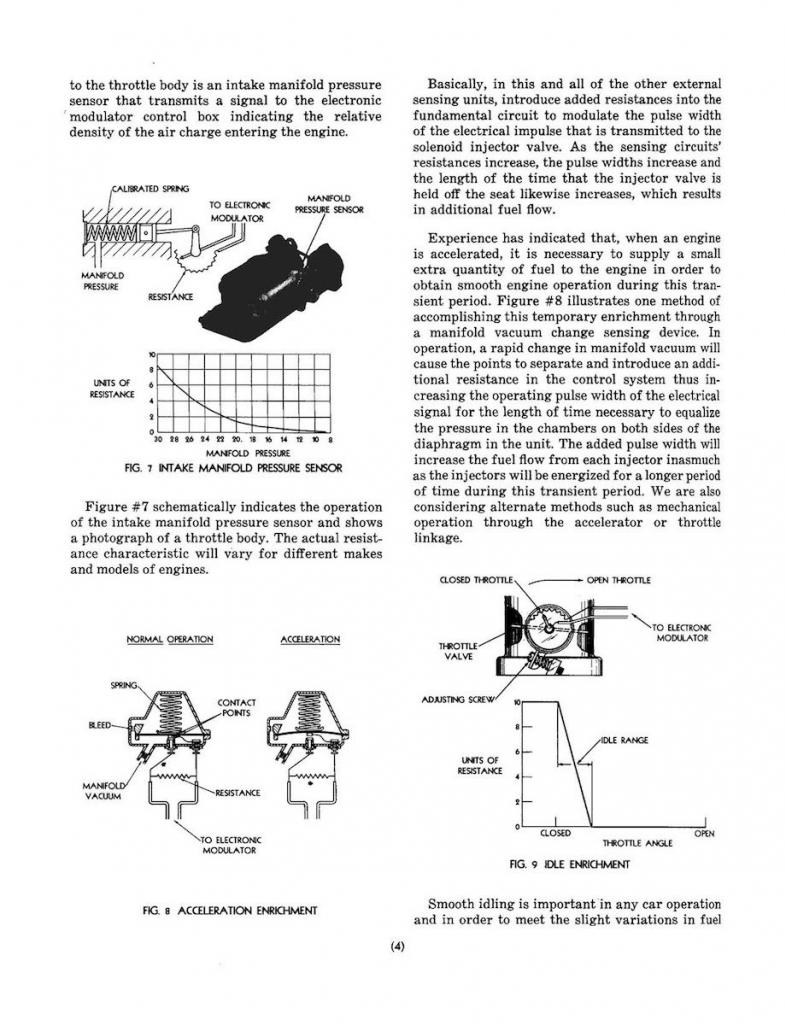 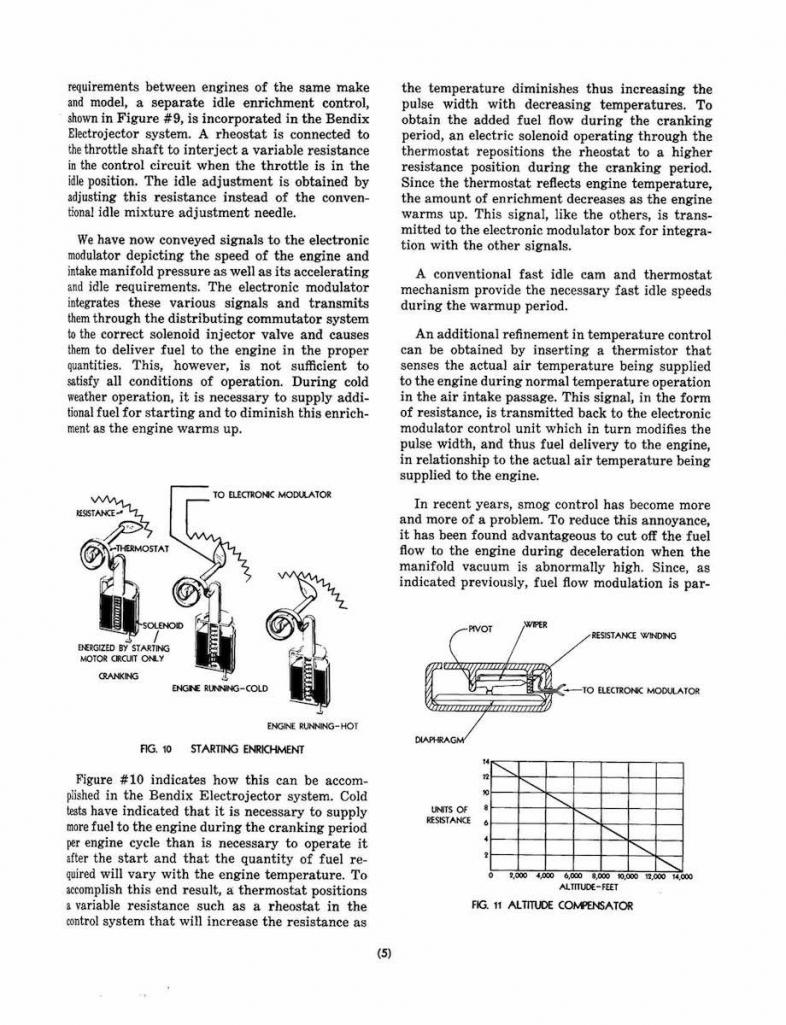 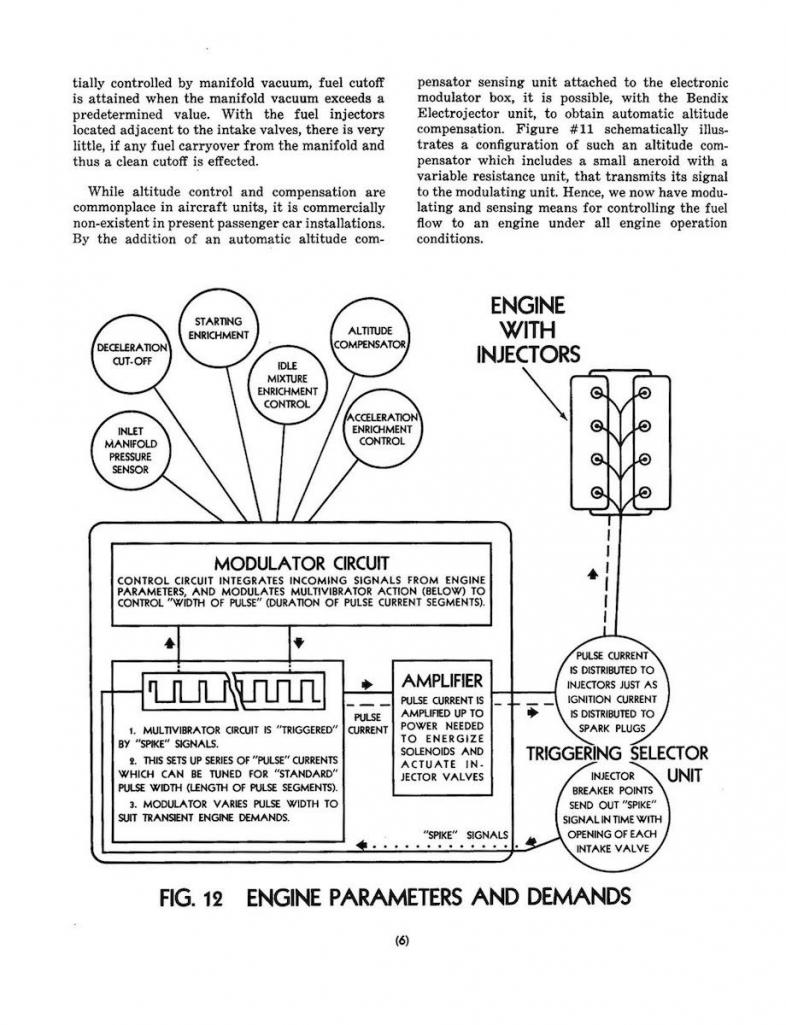 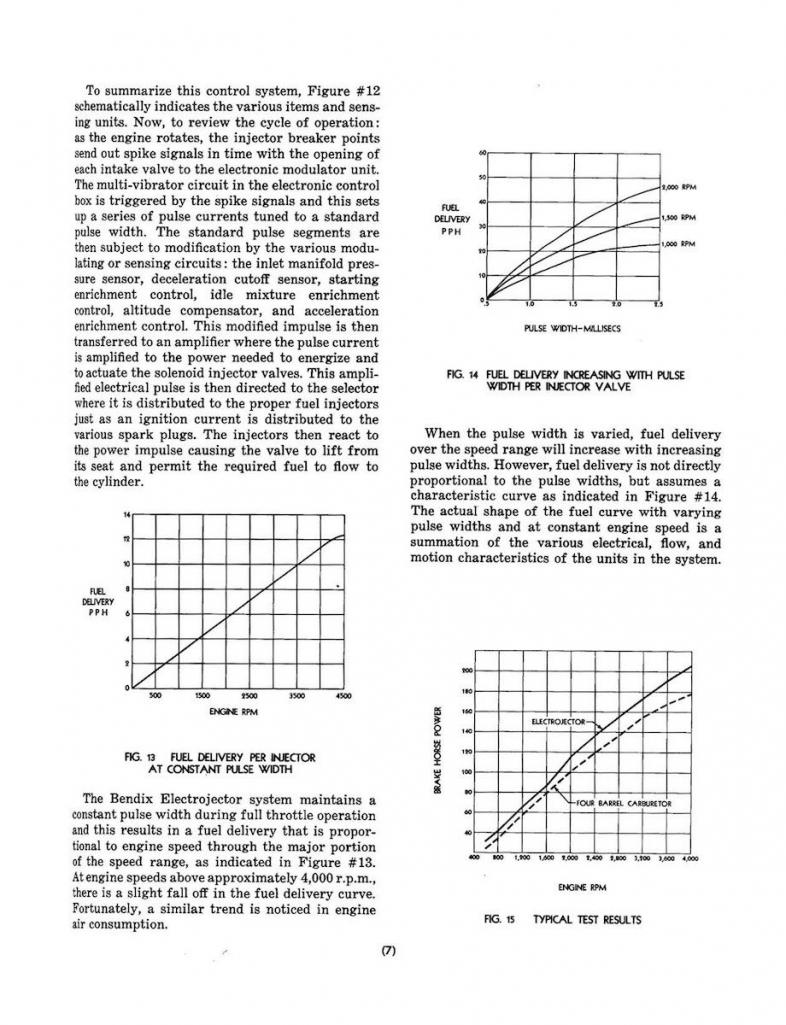 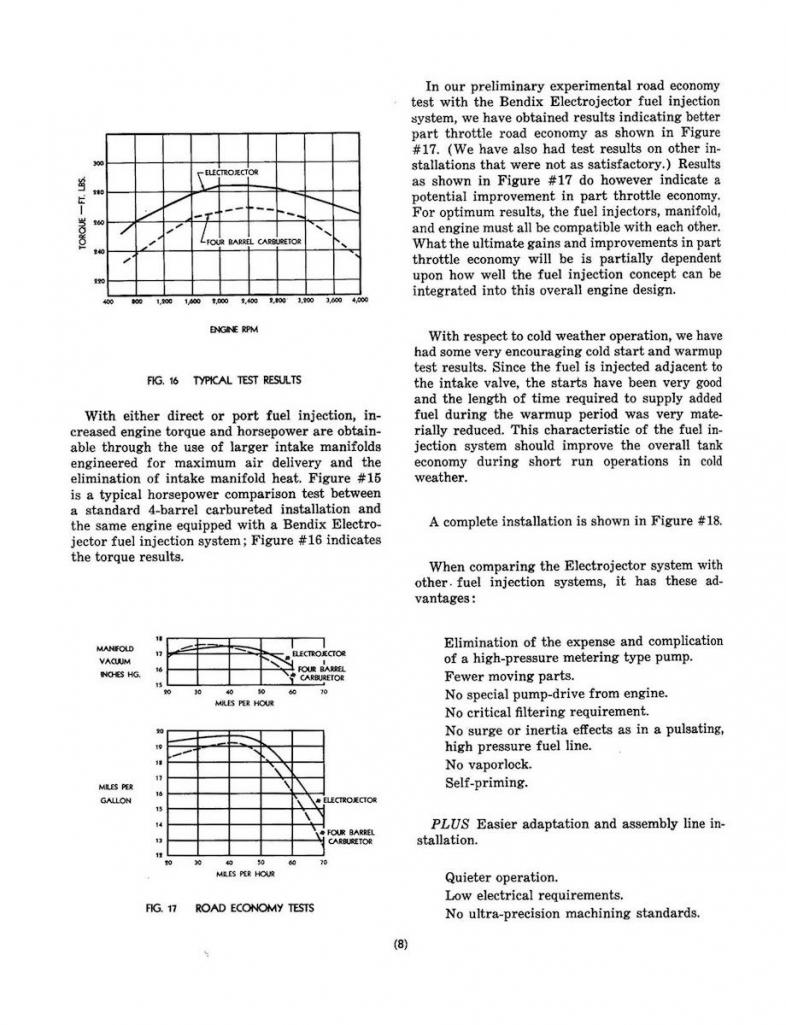 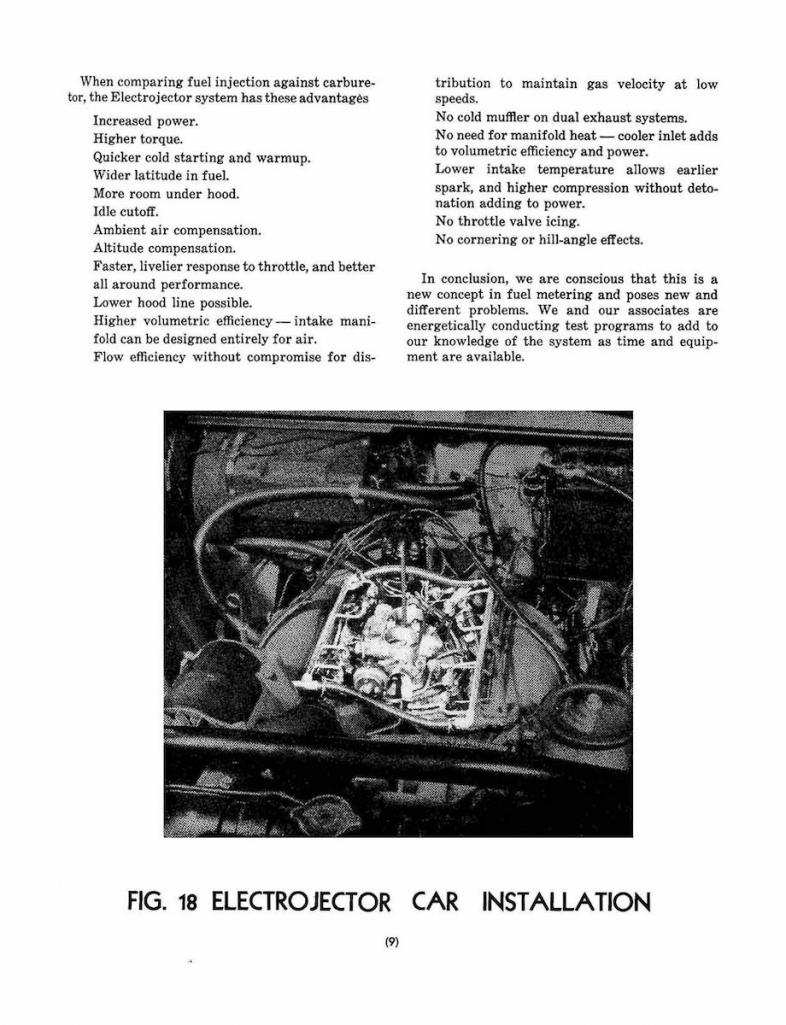 never been able to find any contemporary papers or such on L jet dating from the time of its development. i guess it was all ho hum by that point in time and no big deal? all part of the general horror of emission controls negativity. in the main bendix got done in by external electronic interference of the electronic control unit. vulnerable to electric fields etc. at least understand that appeared to be what caused huge problems and was not detected during factory testing. or as some stories go bendix did not get done in but chrysler perhaps failed to execute to the necessary high standards for components. (bean counters at work?) bosch cracked it. made a better shielded control unit. took them a lot of hard work though. i believe bendix made money out of every bosch unit sold. good way to make coin. like printing money? (IMG:style_emoticons/default/biggrin.gif) |
| VaccaRabite |
 Jun 3 2024, 06:53 AM Jun 3 2024, 06:53 AM
Post
#35
|
|
En Garde!           Group: Admin Posts: 13,571 Joined: 15-December 03 From: Dallastown, PA Member No.: 1,435 Region Association: MidAtlantic Region |
So L-jet was on VW buses and 412s starting in 1974.
So there it is. I thought VW was using D-jet on the late busses. But that's the business case for it. I am very surprised that L-jet did not replace D-jet across the range if it was cheaper and better, but I suppose that the D-jet components had already been purchased and it made more sense to use them up. Loving this thread on the 914s weird middle child. Zach |
| wonkipop |
 Jun 3 2024, 12:41 PM Jun 3 2024, 12:41 PM
Post
#36
|
|
Advanced Member     Group: Members Posts: 4,658 Joined: 6-May 20 From: north antarctica Member No.: 24,231 Region Association: NineFourteenerVille 
|
So L-jet was on VW buses and 412s starting in 1974. So there it is. I thought VW was using D-jet on the late busses. But that's the business case for it. I am very surprised that L-jet did not replace D-jet across the range if it was cheaper and better, but I suppose that the D-jet components had already been purchased and it made more sense to use them up. Loving this thread on the 914s weird middle child. Zach the answer to that one is not too difficult Vacca. USA Fuel regulations. easy to forget but USA is introducing unleaded fuel way in front of other countries. The 2.0 L porsche tweaked 2.0 had already been developed with that in mind. it comes way after the VW 1.7 engine which dates from 1969. there was always two versions of the 2.0 euro with 8.0:1 compression - ran on 95 RON. USA with 7.6:1 compression - ran on 91 RON the USA 2.0 was able to run on unleaded fuel from the get go. unleaded when first introduced could only be formulated with a low octane rating. compression ratios had to come down. no need to rethink the 2.0L, they could just leave it alone until the end of its production run. it was a 914 only engine anyway. the numbers were not there to bother with deveioping a special engine with new injection. at best 10,000 engines in 73/74. The 1.7 engine had higher compression than the 2.0 8.2:1 - ran on 98 RON. world wide. and once they dropped the compression ratio for california in 73 it was a disaster. horsepower dropped from half respectable 80hp to 73hp. time line on fuel was - in 73 all new cars in california had to be able to run on 91 RON unleaded. rest of USA in 74. and worse - in 75 california by law had restrictor in filler and would take only unleaded 91. (Suspect thats part of the reason for later plastic expansion tank on fuel tank - its designed with the restrictor in mind). and VW production needs on the 1.7 (smaller engine) were much larger numbers. 412/914 + Bus for first time. so that engine got reworked. had to be bigger to compensate for lower compression for 91 RON. + the engine was going to go on in the bus at a minimum so they gave it the new EFI system. gradually everything VW got the new system bit by bit including the beetle. you can see the quandry for the last of the 412s in 1974. the high compression 1.7 soldiers on with a 8.2:1 and will only take 98 RON. could not be sold in california on fuel requirements alone. and technically ought not to have been sold in rest of USA. i suspect VW pulled the same trick as they did with the 76 914. they probably only made it up until the end of calendar year 1973 which meant 1973 standards could be applied. technically it was likely a 73 for certification purposes but sold in showrooms as a 74 while stocks lasted. here are the specs for the 74 412 from owners manual. 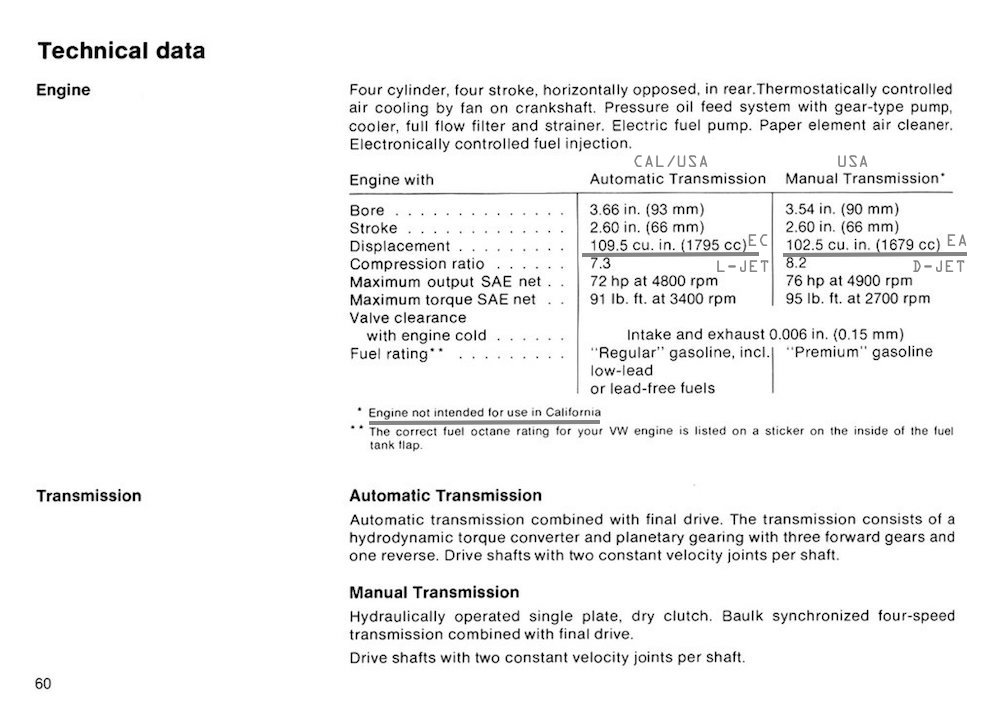 i suspect that no matter what D jet hit the wall emissions wise by 75. the 76s never met 76 emissions standards and certification. were sold as 76 model year but under the certification regime were classed as 75s if manufacture ceased by end of calendar year 1975 - which they did. hence the 912E gets L jet. would probably have been too strangled dowb with D jet. it is a certification standard 76 MY car. as it was the L jet on the 912 copped a lot more gear on it than the last of the 1.8s. smog pump for instance. no 914 L jet had a smog pump. --------- and one last thing to bear in mind. L jet did not require payment of a royalty stream to bendix. not as far as i know. so bosch could turn that drip off once they finished with D jet. far as i can work out last car to ever have D jet was the Jag V12. finished up in 1979. probably went on that far because it was a specially developed developed system for 12 cylinders and they milked it for as long as they could. there was something funny about d jet that meant it worked in multiples of 4. 4 cylinders. 8 cylinders. 12 cylinders etc. jeff bowlsby would know exactly why that was. |
| mrholland2 |
 Jun 4 2024, 10:06 AM Jun 4 2024, 10:06 AM
Post
#37
|
|
Senior Member    Group: Members Posts: 760 Joined: 7-September 11 From: Santa Maria,CA Member No.: 13,531 Region Association: Central California |
So if this was the case:
i suspect that no matter what D jet hit the wall emissions wise by 75. the 76s never met 76 emissions standards and certification. were sold as 76 model year but under the certification regime were classed as 75s if manufacture ceased by end of calendar year 1975 - which they did. Why are 76 914s subject to smog testing in CA? I mean, they should only have to meet the 1975 standards which is no smogging. |
| brant |
 Jun 4 2024, 10:35 AM Jun 4 2024, 10:35 AM
Post
#38
|
|
914 Wizard           Group: Members Posts: 11,766 Joined: 30-December 02 From: Colorado Member No.: 47 Region Association: Rocky Mountains 

|
your logic makes sense...
but I would guess the state didn't want to have to consider each and every different manufacturer... who was a grandfathered car from 1975 and who had built an entirely new model that needed to be certified... so they just chose a year for the cut off without the extra work of deciphering which cars had 75 equipment and which did not. |
| JeffBowlsby |
 Jun 4 2024, 01:20 PM Jun 4 2024, 01:20 PM
Post
#39
|
|
914 Wiring Harnesses      Group: Members Posts: 8,703 Joined: 7-January 03 From: San Ramon CA Member No.: 104 Region Association: None 
|
Djet is bank fire. 2 banks. For the 914, it’s 2 banks x 2 cyl. The 6cyl BMW E9 is 2banks x 3. MB V8 is 2 banks x 4. I can only guess what the jag is.
|
| technicalninja |
 Jun 4 2024, 01:38 PM Jun 4 2024, 01:38 PM
Post
#40
|
|
Senior Member    Group: Members Posts: 1,948 Joined: 31-January 23 From: Granbury Texas Member No.: 27,135 Region Association: Southwest Region 
|
All the L-jet I am familiar with is batch in the same breakdowns.
L-jet touched OBD2 and maybe was sequential, but I'd expect the sequential shift with Motronic... |
  |
1 User(s) are reading this topic (1 Guests and 0 Anonymous Users)
0 Members:

|
Lo-Fi Version | Time is now: 28th October 2024 - 02:49 AM |
Invision Power Board
v9.1.4 © 2024 IPS, Inc.








